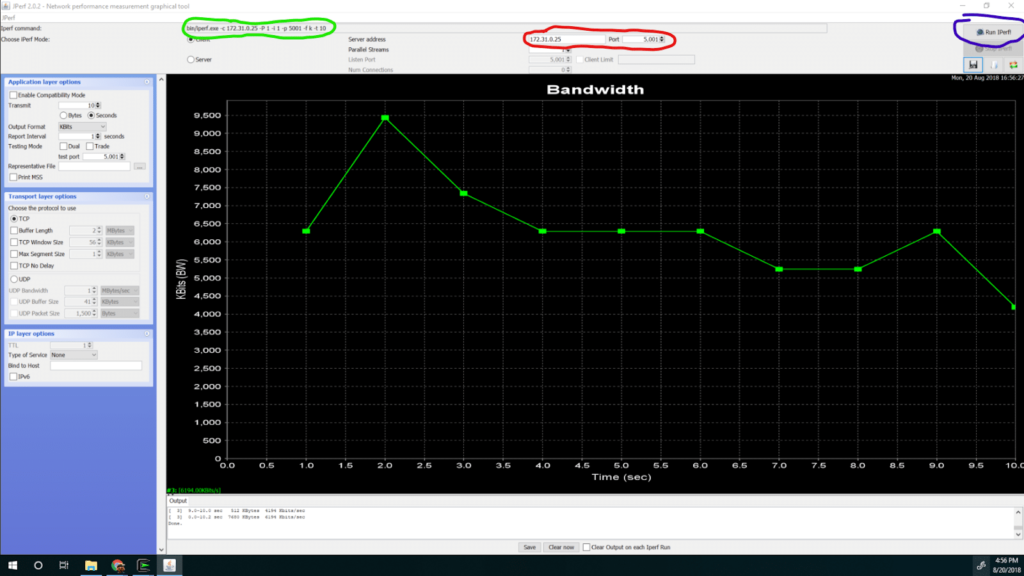Happy New Year! I hope that everyone enjoyed the holidays and have had a great start to 2019. For NetBeez, 2018 was a great year: we have added many more customers and we were recognized for the second year in a row as Emerging Vendor from the CRN magazine. We look forward to continuing with the same tone in 2019!
Our blog also saw success in 2018; we published a total of 49 articles and our readers grew by 132%. For this, we have to thank our regular visitors for referring our blog to friends and colleagues. The richness of content and value of our blog has also increased thanks to the contribution of guest writers such as Nick Buraglio and Rowell Dionicio.
If you have made it this far, you’re probably curious to know the 5 most read blog posts that we published in 2018. Let’s start with the fifth one…
Top 5 NetBeez Blog Posts Read in 2018
#5 – TCP vs QUIC: A New Transport Protocol
This blog post describes the similarities and differences between TCP and QUIC. Everybody is familiar with the Transmission Control Protocol (TCP), which is a connection-oriented protocol used today on the Internet. Developed in 1974, this protocol is still widely used to control the transmission of information from one host to another. Recently, Google has released a new protocol called QUIC (Quick UDP Internet Connections) to address some performance limits of TCP. Read the blog post if you want to know the details about this new protocol.
#4 – How to Use JPerf

JPerf (Java Perf) is a GUI-based network throughput testing application based on iperf. Since iperf only runs via command-line, many users find JPerf to be a good option for a desktop environment. If you are interested in running throughput tests in a GUI interface, you may want to read this article. Panos also shares some helpful tips and tricks about JPerf’s installation and usage on Windows and MAC OS X workstations.
#3 – Speedtest Comparison: Ookla, NDT, NetFlix, HTML, iPerf
Network slowness is a very frustrating problem. When a user or network engineer is troubleshooting this problem, network speed tests are useful to test available throughput and confirm if it’s actually a network problem. The most popular service used to test network throughput is speedtest.net. However, not everybody is familiar with other network speed tests tools and services available. In this article, Panos reviews some other tools and services available to assess network speed.
#2 – Networking with Docker: Don’t settle for the defaults
Whether you like it or not, software containers are taking over the world. Docker is one of the most mature and most commonly used frameworks to implement software containers. Very similar to virtual machines, software containers are isolated instances that require a network connection to communicate with the outside world. In this article, Joshua reviews Docker’s default configuration and reviews options available to grant network access to a Docker container.
The top blog post in 2018:
#1 – How to use telnet to test connectivity to TCP ports
Telnet is a command-line utility that provides a shell on a remote host. Many network engineers are familiar with this command because it allows you to configure and manage network devices via a command-line interface. However, because telnet transmits all information over an unencrypted connection, this utility became obsolete and has since been replaced by ssh (secure shell), which is basically a “secure version” of telnet. But telnet hasn’t been put on the shelf yet. In this article we explore other use cases of telnet that enable network engineers to troubleshoot and test connectivity to remote TCP services as well as network firewalls.
To keep things short and sweet, I didn’t have the time and space to list the other blog posts that were statistically well received by our audience. If you are curious to read more, you can check the following articles that were published in 2018:
- Avoiding ARP Flux in Multi-Interface Linux Hosts
- iPerf Comparison
- Raspberry Pi 3B+ iPerf WiFi Performance
- How DNS Cache Works
- Interop ITX 2018 Hands-On Session
To conclude, allow me to once again thank our audience, users, and customers for giving us the opportunity to serve and/or write for you throughout 2018. As I said before, this past year has been a memorable one for NetBeez and we hope for you as well. We will work even harder to exceed your expectations and requests.





